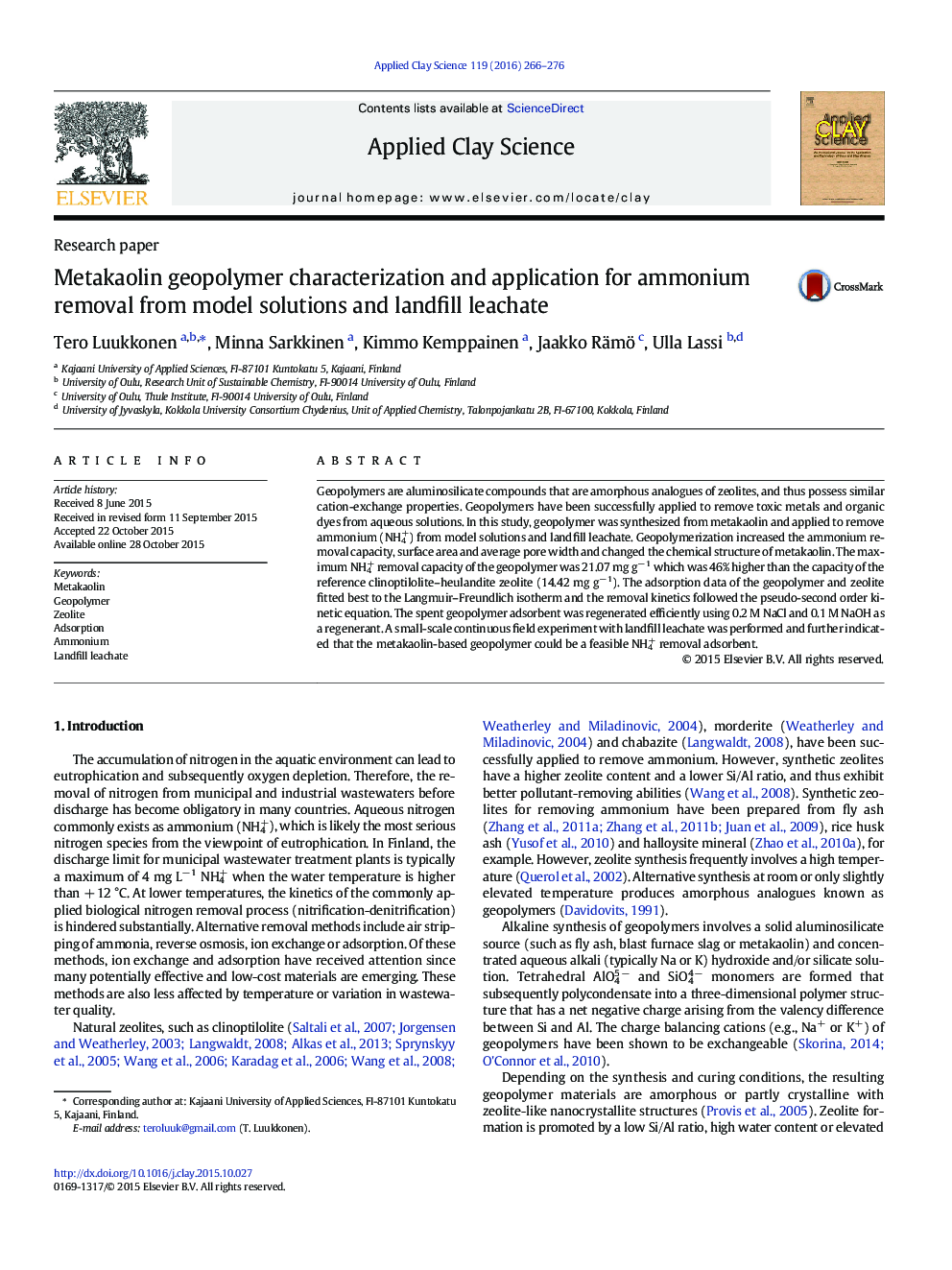| Article ID | Journal | Published Year | Pages | File Type |
|---|---|---|---|---|
| 1694219 | Applied Clay Science | 2016 | 11 Pages |
•Novel regenerable NH4+ sorbent was developed: metakaolin geopolymer.•Geopolymerization significantly improved the NH4+ removal capacity of metakaolin.•Surface area, pore width and volumes increased as a result of geopolymerization.•Geopolymer was approx. 46% more effective than clinoptilolite–heulandite zeolite.•Landfill leachate field test confirmed the practical applicability of the results.
Geopolymers are aluminosilicate compounds that are amorphous analogues of zeolites, and thus possess similar cation-exchange properties. Geopolymers have been successfully applied to remove toxic metals and organic dyes from aqueous solutions. In this study, geopolymer was synthesized from metakaolin and applied to remove ammonium (NH4+) from model solutions and landfill leachate. Geopolymerization increased the ammonium removal capacity, surface area and average pore width and changed the chemical structure of metakaolin. The maximum NH4+ removal capacity of the geopolymer was 21.07 mg g− 1 which was 46% higher than the capacity of the reference clinoptilolite–heulandite zeolite (14.42 mg g− 1). The adsorption data of the geopolymer and zeolite fitted best to the Langmuir–Freundlich isotherm and the removal kinetics followed the pseudo-second order kinetic equation. The spent geopolymer adsorbent was regenerated efficiently using 0.2 M NaCl and 0.1 M NaOH as a regenerant. A small-scale continuous field experiment with landfill leachate was performed and further indicated that the metakaolin-based geopolymer could be a feasible NH4+ removal adsorbent.
Graphical abstractFigure optionsDownload full-size imageDownload as PowerPoint slide
